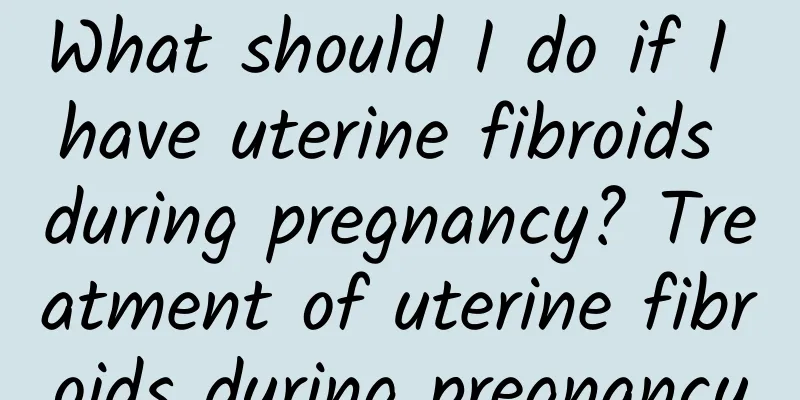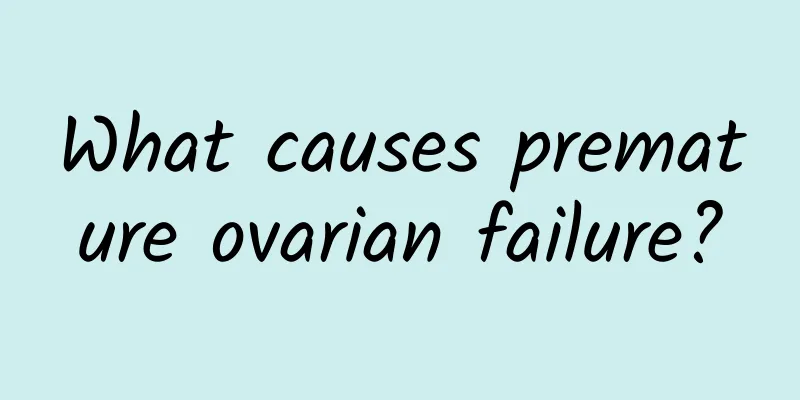What should I do if I have uterine fibroids during pregnancy? Treatment of uterine fibroids during pregnancy

|
What should I do if I have uterine fibroids during pregnancy? Women who have uterine fibroids during pregnancy are at risk of miscarriage and may also suffer from abnormal fetal position. How to treat uterine fibroids during pregnancy? If uterine fibroids are discovered after pregnancy, treatment should be based on factors such as the month of pregnancy, fibroid size, and clinical manifestations. l) Treatment of uterine fibroids in early pregnancy: Intervention of uterine fibroids in early pregnancy is likely to lead to miscarriage, so it can wait until the second trimester. If the fibroids are large, the chances of complications of continuing the pregnancy are estimated to be greater. If the patient requires an artificial abortion, the pregnancy can be terminated first, the fibroids can be removed in the short term, and an artificial abortion can also be performed at the same time. 2) Treatment of uterine fibroids in mid-pregnancy: ① For those with fibroids less than 6 cm in diameter and no symptoms, most prenatal examinations do not require special treatment; ② For fibroids greater than 6 cm in diameter, they may continue to grow as they grow. Large fibroids are prone to red samples stimulating uterine contractions or peritoneal irritation symptoms. At this time, obstetricians only recommend bed rest and conservative treatment with analgesics. Myomectomy during pregnancy is rarely recommended, only when necessary. 3) Treatment of uterine fibroids in late pregnancy: Small fibroids cannot be treated. If the diameter of the fibroid is larger than 8cm but there are no symptoms, you can wait until full term for a cesarean section and a myomectomy at the same time. Because large uterine fibroids may not only affect uterine contraction, abnormal production and delayed labor, but also the possibility of postpartum placental retention, postpartum hemorrhage and postpartum infection is greater than that of normal pregnant women. In some cases, the uterus may also be forced to be removed due to uncontrollable postpartum hemorrhage or postpartum infection. Therefore, the method of delivery should be cesarean section, and cesarean section should be performed at the same time as myomectomy. Uterine fibroids are a common type of female disease and are female genital tumors. Uterine fibroids can cause symptoms such as female infertility, miscarriage, and ectopic pregnancy, and are a disease that we need to pay attention to. |
>>: What to do with benign uterine fibroids? How to cure benign uterine fibroids?
Recommend
How to regulate irregular menstruation for women? Recommended self-massage method for irregular menstruation
Lie on your back first, and use the thenar of you...
Brief analysis of four common methods of checking cervical erosion
Since the symptoms of early cervical erosion are ...
What is cervical hypertrophy? Does it need treatment?
Cervical hypertrophy is the proliferation of cerv...
How to effectively prevent female pelvic peritonitis
We all know about pelvic peritonitis. This diseas...
What is the difference between induced labor and miscarriage? How to care for induced labor and miscarriage?
The difference between induced labor and abortion...
Be careful! 5 bad habits that may make you prone to obesity
"Oh, why can't I lose weight no matter h...
Can uterine ultrasound detect adnexitis?
Uterine color Doppler ultrasound can assist in th...
TCM Syndrome Differentiation and Treatment of Various Types of Dysfunctional Uterine Bleeding
Dysfunctional uterine bleeding belongs to the cat...
Current strategies for preventing cervical precancerous lesions
There are no obvious symptoms of cervical precanc...
What medicine is used for vulvar itching
Vulvar itching is a common gynecological disease....
Nursing plan for hyperprolactinemia
Many patients with hyperprolactinemia find out th...
How to relieve dysmenorrhea in winter?
Dysmenorrhea is a very common phenomenon. In rece...
The main causes of adnexitis in women
Adnexitis is a common disease among women. Nowada...
If you use your muscles incorrectly, the exercise may be in vain!
The same exercise movement requires the cooperati...
What is the reason why menstruation often comes every two or three months?
What is the reason why menstruation often comes e...









